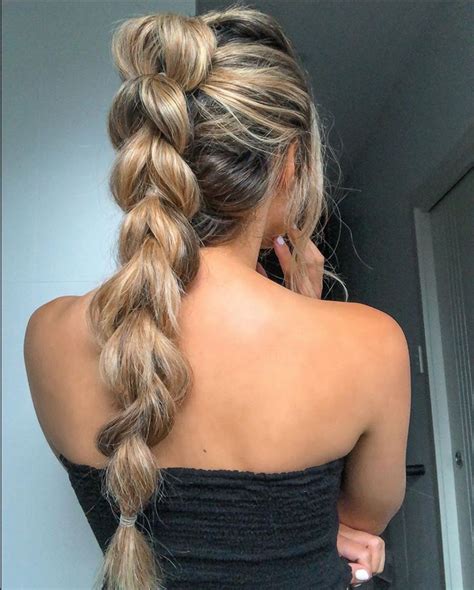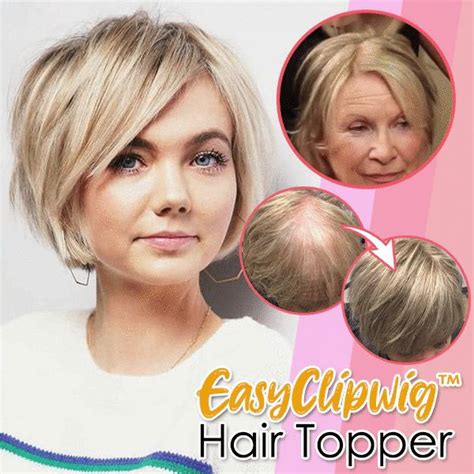Hair Toppers for Thin Hair: A Game-Changer for Confidence
Over 50 million Americans experience hair loss, with women accounting for 40% of those affected. For many, this can be a significant source of distress, impacting self-esteem and quality of life. But there is hope! Hair toppers for thin hair offer an innovative solution, providing an instant boost in volume and coverage.

What Exactly Are Hair Toppers?
Hair toppers are discreet, partial hairpieces that attach to your natural hair, seamlessly blending to create the illusion of thicker, fuller locks. They come in a variety of sizes, colors, and textures to match your specific hair needs and preferences.
Types of Hair Toppers
1. Base Type
- Monofilament: Creates the appearance of natural scalp, allowing hair to move and part freely.
- Lace: Delicate and breathable, providing a realistic hairline.
- PU (Polyurethane): Durable and water-resistant, ideal for active lifestyles.
2. Hair Type
- Human Hair: Natural-looking and can be styled with heat tools.
- Synthetic Hair: Less expensive than human hair, various colors and textures.
- Heat-Resistant Synthetic Hair: Can be styled with heat tools without damage.
3. Attachment Method
- Clip-In: Easy to attach and remove, suitable for occasional use.
- Tape-In: More secure, lasting for several weeks.
- Fusion: Permanent, involving bonding hair strands to natural hair.
Benefits of Hair Toppers for Thin Hair
- Instant Volume and Thickness: Cover thinning areas and create the appearance of thicker, fuller hair.
- Versatile Styling: Style hair toppers to match your natural hair or experiment with different looks.
- Customizable: Choose from a range of colors, textures, and sizes to find the perfect fit.
- Confidence Boost: Helps restore confidence and self-esteem by concealing hair loss.
Choosing the Right Hair Topper
Consider the following factors when selecting a hair topper:
- Hair Loss Pattern: Determine the location and extent of hair loss to choose the appropriate size and base type.
- Natural Hair Color and Texture: Match the hair topper to your natural hair as closely as possible for a seamless blend.
- Budget: Hair toppers vary in price depending on materials, attachment method, and customization options.
- Lifestyle: Consider your lifestyle and the frequency of use when choosing an attachment method.
Common Mistakes to Avoid
- Choosing the Wrong Size: A hair topper that is too large or small will be uncomfortable and noticeable.
- Over-Styling: Avoid excessive heat styling or chemical treatments that can damage the hair topper.
- Poor Maintenance: Regular cleaning and conditioning are essential to keep the hair topper looking fresh and tangle-free.
Pros and Cons of Hair Toppers
Pros
- Immediate hair volume and coverage
- Customizable and discreet
- Boost confidence and self-esteem
- Easy maintenance
Cons
- Can be expensive
- May require professional installation and maintenance
- Can be uncomfortable if not properly fitted
- May not be suitable for all hair loss patterns
Cost of Hair Toppers for Thin Hair
The cost of hair toppers varies widely depending on the factors mentioned above. Expect to pay anywhere from $150 to $5,000, with the average price ranging from $500 to $1,500.
Where to Buy Hair Toppers
Hair toppers can be purchased from:
- Hair salons specializing in hair loss
- Online retailers like Amazon, Etsy, and Hairtopper.com
- Hair restoration clinics
Conclusion
Hair toppers for thin hair offer a valuable tool for managing the challenges associated with hair loss. By providing instant volume and coverage, they can help restore confidence and improve quality of life. Whether you’re looking to conceal thinning areas or simply add volume to your locks, hair toppers can be the perfect solution.
Table 1: Hair Loss Statistics
| Statistic | Number |
|---|---|
| Americans experiencing hair loss | Over 50 million |
| Women affected by hair loss | 40% |
| Annual cost of hair loss treatments | $1.5 billion |
Table 2: Types of Hair Toppers by Base Type
| Base Type | Description |
|---|---|
| Monofilament | Creates a natural scalp appearance |
| Lace | Delicate and breathable, providing a realistic hairline |
| PU (Polyurethane) | Durable and water-resistant |
Table 3: Considerations for Choosing a Hair Topper
| Factor | Details |
|---|---|
| Hair Loss Pattern | Determine location and extent of thinning |
| Natural Hair Color and Texture | Match as closely as possible |
| Budget | Consider cost of materials, attachment method, and customization |
| Lifestyle | Choose attachment method based on frequency of use |
Table 4: Pros and Cons of Hair Toppers
| Pros | Cons |
|---|---|
| Instant volume and coverage | Can be expensive |
| Customizable and discreet | May require professional installation and maintenance |
| Boost confidence and self-esteem | Can be uncomfortable if not properly fitted |
| Easy maintenance | May not be suitable for all hair loss patterns |
